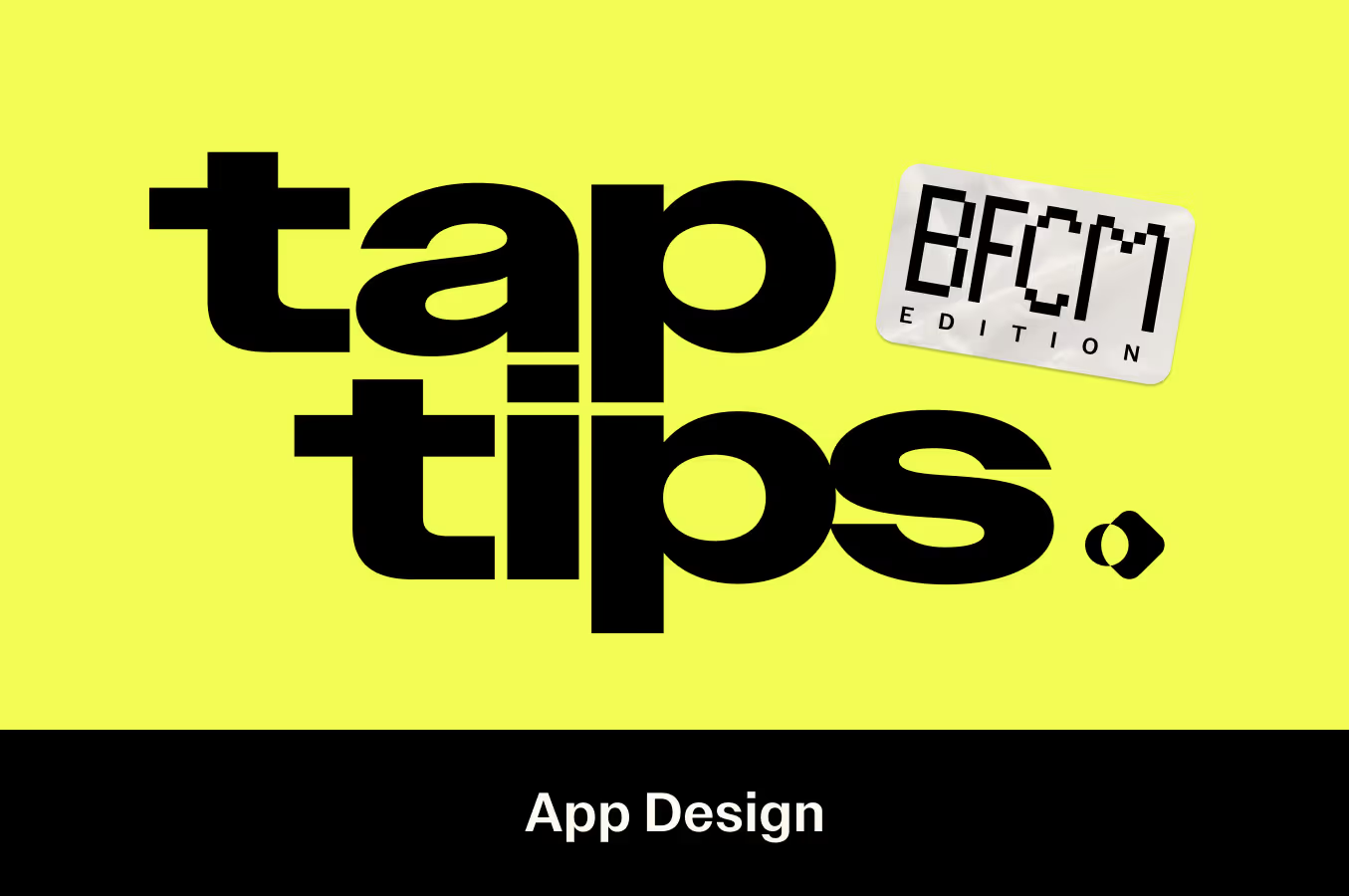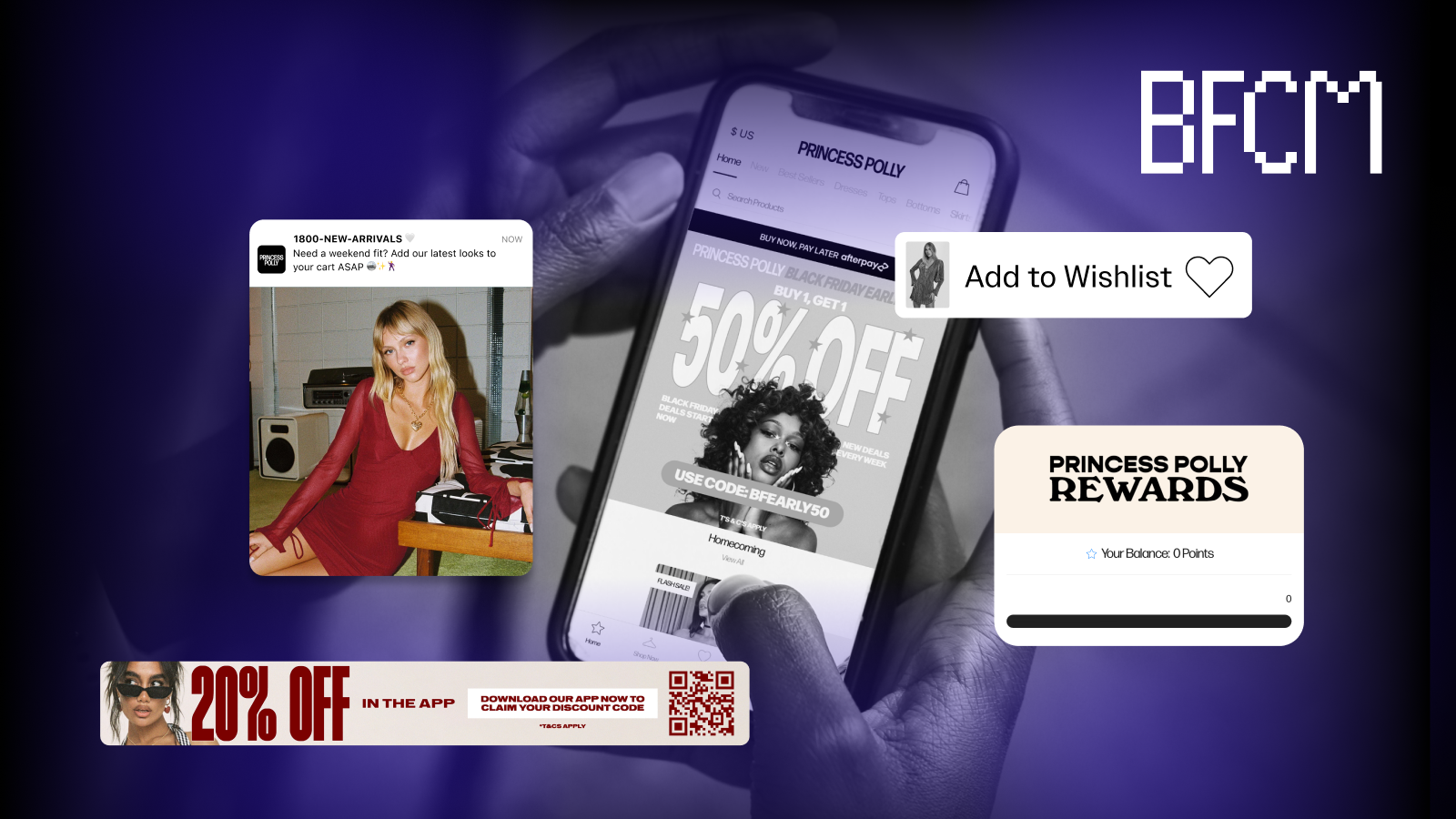
Everyday we get the opportunity to watch Shopify's top brands continue to grow their revenue and thrive with a mobile app. Here’s a fast compilation of Shopify app design inspiration from our team's favorite mobile apps. If you’re looking to turn your Shopify store into a mobile app or revamp what you already have, these apps can serve as inspiration to take your brand to the next level.
1. Jungalow
The home decor etailer embraces their bohemian-modern aesthetic in their mobile app design with vibrant colors and patterns. Every app banner and product image is reflective of their unique branding. They also use their launch screen as an opportunity to share their brand’s vision.
.png)
2. Mellogang
Mellogang is the official merch store for DJ Marshmello. Besides selling merchandise, the app is the brand’s mobile content hub since users can access videos, music, shows and their game all from the menu bar. They also smartly uploaded a black background image that bleeds, which matches perfectly with their primary color.
.png)
3. The Hundreds
The classic California streetwear brand takes full advantage of the technology of the Tapcart app. They feature the 3D Shopping Block so users can check out a BMX bike as if it were right next to them.

4. JLUXLABEL
The fashion e-boutique consistently creates on-brand content for their app banners including a Video Block. They have an app-exclusive outlet which makes the app a necessity for their loyal shoppers.
.png)
5. RIPNDIP
The streetwear brand stays true to its skater personality and designed its app to be as unique as it is. They are constantly updating their app with creative animations and new products – giving their shoppers a reason to keep coming back.

6. Mallet
The London-born premium footwear company uses a clean, yet urban aesthetic for their mobile app. Their clear call-to-action buttons are extremely effective.

The popular candle company crushes it with its navigation which is extremely intuitive as the candles are categorized by memories, countries, cities, holidays, etc.

8. Chubbies
The Chubbies brand shines through its mobile app. They use colorful nature photography to showcase their products and cheeky humor in their banners. Chubbies adapted their logo to an app icon to look perfect on a mobile device.
.png)
How to Create a Shopify Mobile App Design Users Will Love
With mobile apps popping up like mushrooms, your app design must stand out from your competitors while giving your users a seamless experience. Your users only have so much space on their smartphones, andyou won’t be just competing with ecommerce apps to earn your place on the user's mobile home screen.
While creating your app design, there are three things that you absolutely need to achieve:
- Easy navigation
- Smooth interface
- Effective features
To help you create the perfect Shopify mobile app that users will download and use frequently, we’ve compiled some of the best app design tips our customers have found success with:
1. Follow or Create Your Design Guidelines Document Based on Your Brand and Shopify Store
Everybody loves creative freedom, but since you already have a Shopify store, you don’t want your mobile app design to deviate from your store's theme and color schemes. The first step is gathering all the colors, images, icons, and elements you already use for your Shopify store.
You don’t need to use every graphic you already have from your Shopify store in your mobile app, but both the platform designs must remain cohesive. Tweak the elements to blend with the mobile app and create a familiar yet uniquely engaging user experience.
2. Study Your Competitors' Apps to Understand Trends and Core Functionalities to Keep in Mind
You don’t have to reinvent the wheel to create a great Shopify mobile app. You can take inspiration from your competitors and find out what’s already working. Download the mobile apps of all your top competitors and view them from the perspective of a potential customer. Take note of which features and functionalities you can incorporate into your Shopify mobile app (and which ones you should leave behind). Check out our case studies to find brands in your industry with apps that you can download.
While checking for functionalities, keep in mind that simplicity rules. You don’t want to add features that are complicated without being useful. Instead, focus on features that users are most likely to benefit from and may even expect your app to have.
3. Think About Your App's Navigation and How to Make It Easier for Users to Find the Products They Want
Nothing is worse for a mobile user than to land on an app and have no idea how to find their way around it. Adding the best features to your app won’t do any good if users can’t browse your products intuitively.
Here are some tips that you should keep in mind while working on the navigation of your app:
- Take hand and finger positioning into consideration
- Use what users already know, like category pages with clear naming and easy-to-pick variations (color, size, specs, etc.) on product pages
- Avoid clutter by using white space properly
- Make the navigation options evident by using descriptive names and only showing relevant options for every screen, especially because mobile screen sizes are limited.
It is crucial to evaluate multiple options while deciding on the perfect navigation. The first place to start would be to look at popular mobile design templates and create variations to find the one that provides the best experience.
4. Design for Movement and Small Screens
Mobile screens are small, and there is little space for heavy images and texts. Using them in the wrong way would result in cluttering and endless scrolling. Here are some tips to keep in mind while designing an app to use the limited screen size effectively:
- Use white space to avoid a cluttered feeling
- Keep copy across the app short and sweet
- Use touch gestures like swiping, tapping, and pinching
- Optimize font size for small screens and make it responsive
- Add icons for users to access additional information
- Use only relevant, compressed images for products and offers
Users expect apps to be interactive, meaning micro-transitions must be seamless. Designers need to consider the moving parts of an app, so it doesn’t inhibit the shopping experience. Think of buttons when tapped or the transition between pages. Smooth micro-interactions can provide a more memorable experience.
5. Test Your Designs and Keep Improving
Even the best apps have room for improvement. To save yourself from redesigning your app endlessly, take advantage of solutions like Figma or Invision to create prototypes.
Once your prototype is ready, send it to UI/UX testers and use their feedback to improve the app. App layout design improvement is a constant process you must do even after a successful launch. Prototyping before working on the actual app will save you a ton of wasted time and money, down the road.
Designing a mobile app can be tricky, especially when making sure that the users will love it. Apart from coding an entire mobile app or hiring a third party developer team, there is another option that allows you to build your mobile app without coding and keep the process in house: using a drag and drop builder like Tapcart that includes an app designing software.
3 Advantages of Using a Drag and Drop Builder for Your Shopify App Design
Although there are many reasons to create your app using a no-code tool, here are the main design reasons for using such tools:
1. It's Easier to Understand Your Limits
When you build a custom app, the sky's the limit, but with more options comes more confusion. Mobile app designers without development experience can create unnecessary complexities that will increase your development time and cost, in addition to potentially creating interactions that’ll become a bottleneck for maintaining the app or making updates when necessary.
On the other hand, drag-and-drop app builders already have tried and tested features and elements informing your design process on how far you can go with your app design. The magic of app builders is that they streamline otherwise time-consuming tasks, freeing your team to work more efficiently.
2. Creating a Prototype Takes Minutes, Not Days
App builders are the best choice when you want to roll out your app quickly. You can get the prototype functional and ready for testing within a few hours using an app builder like Tapcart.
Connecting your Shopify store to Tapcart will create a fully functional mobile store app that you can further customize using the drag-and-drop editor. Doing the same thing in Figma would require days, if not weeks, depending on how many interactions and screens you want to implement.
3. Your Design Team Can Handle the Process From Beginning to End
You won’t need to hire an expensive developer to build the app for you. There is no back and forth between the design and developer team to get the app right.
It also means that updating changes or optimizations would take just a few seconds instead of waiting for developers to have the time to handle the task.
However, at the same time, you’re freeing development time and budget for your website, making it more sustainable across the board to launch an omnichannel marketing campaign.
Essential Elements of a Great Mobile App Design [Checklist]
What makes a great eCommerce mobile app? The answer is combining and seamlessly integrating all the essential elements to create a great user experience. Here are the most crucial aspects you need to implement in your app design.
- Colors: Choosing the right color that resembles your brand is an integral part of the process of designing a mobile app.
- Fonts: A font that is easy to read and modern will boost the strength of your copy. You can also use the same on your website for cross-channel consistency.
- Icons: Icons help you save screen size space and make it easy for your users to navigate the app.
- Touch Gestures: Touch gestures enhance the user experience and help you save precious mobile screen space.
- Illustrations: A picture says a thousand words, and the right images save you from writing endless copy to get your point across.
If you haven’t thought of any of these five elements, you might want to go back to the whiteboard before starting to design your screens.
For more Shopify mobile app design help, be sure to check out the Tapcart Design Guide.
If you're curious about the Tapcart platform, contact us to learn more about all of our design features and benefits.














